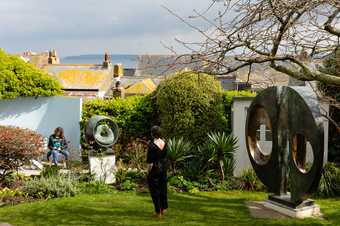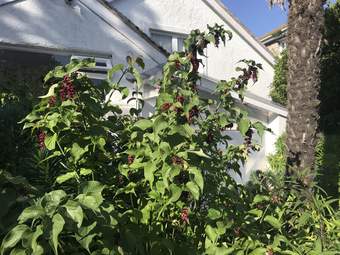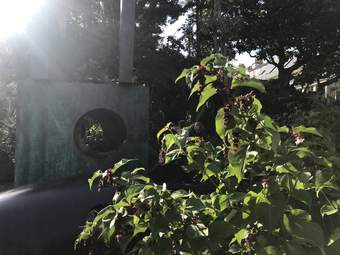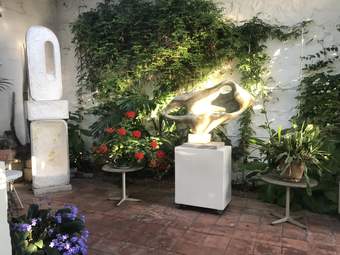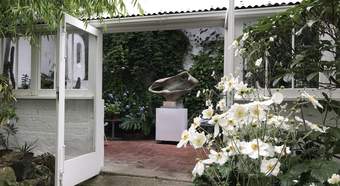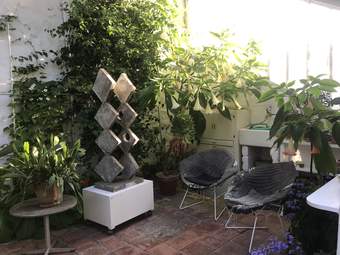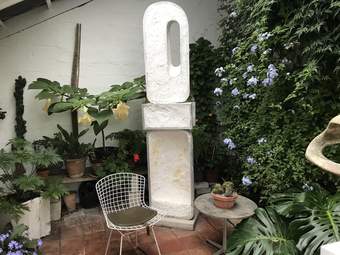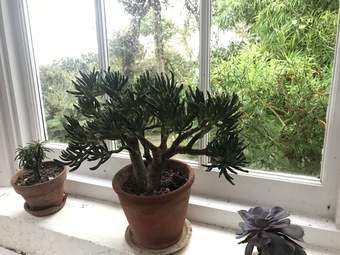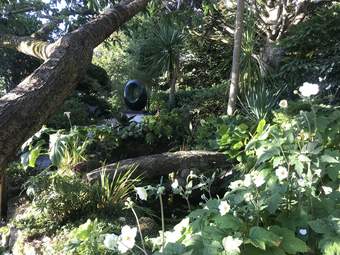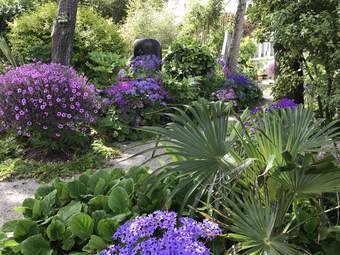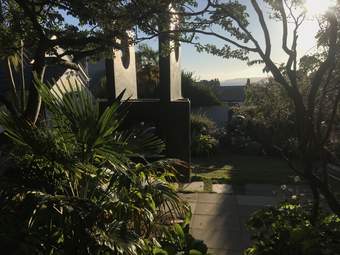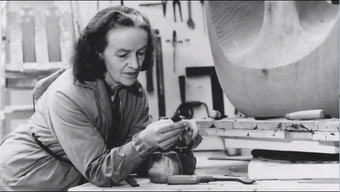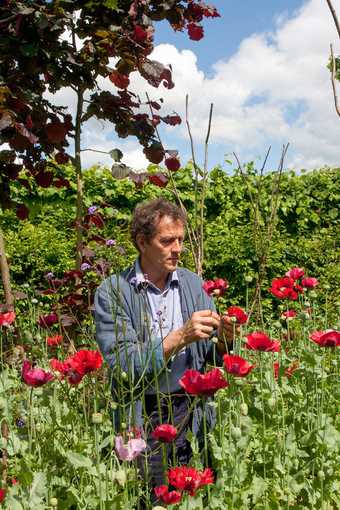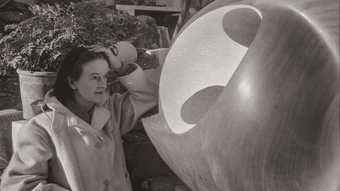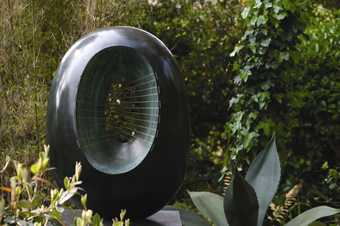A bit of background
Artist Barbara Hepworth moved to Cornwall at the outbreak of war in 1939. She lived and worked in Trewyn studios, now the Hepworth Museum, from 1949 until her death in 1975. 'Finding Trewyn Studio was a sort of magic', wrote Hepworth; 'here was a studio, a yard and garden where I could work in open air and space'. Today, Jodi Dickinson, Head Gardener at the Barbara Hepworth Museum and Sculpture Garden takes great care to maintain the garden as it was towards the end of Hepworth's life. Here he shares his top tips on texture, height, climate and sustainability.
Re-defining weeds
[to] despoil places of rare beauty and quiet solitude… [would be] a crime on our part, if we do not preserve for our children what we ourselves have been bequeathed
Barbara Hepworth
A weed is any plant that grows in a location where humans do not want it to grow. Plants that self-seed and grow rapidly are commonly labelled as weeds. These plants may either come from other regions, like the Himalayan honeysuckle, or be native to the local environment. Typically, these plants have adapted to thrive in disturbed soil, such as when a wild boar has snuffled through the soil. In the case of native plants, they may serve as the sole food source for a particular moth or butterfly larvae, so they play a vital role in a complex and interdependent ecosystem.
Gentle Gardening is a technique that collaborates with weeds, rather than opposing them, to create a more relaxed and easily manageable garden.
Gentle Gardening tips:
- Prevent Seed Production: Deadhead, or cut down plants before they go to seed to control plant numbers
- Remove Spreading Plants: Get rid of plants with spreading roots, like creeping thistle
- Select Beneficial Weeds: Choose certain weeds like dead nettle, plantain and Geranium robertianum for ground cover. This stops other 'weed' seeds from growing
- Layering: Plant cultivated perennials, grasses and shrubs into this ground cover layer
- Inexpensive Native Plants: Beautiful native plants (often viewed as weeds) like Centaurea nigra, Echium vulgare, Daucus carota and Myosotis sylvatica can be introduced cheaply with seed
- Embrace Volunteer Plants: These are plants which self-seed and are often viewed as weeds. In the Barbara Hepworth Museum garden, an example is Himalayan honeysuckle (Leycesteria formosa). Erigeron karvinskianus and kangaroo apple (Solanum lanciniatum) may have also started as volunteer plants
Greenhouses & Houseplants
Growing plants indoors or in greenhouses can be helpful as it allows you to grow plants from warmer climates that wouldn't thrive in the UK's colder conditions. While the rest of her spaces were for living and work, Hepworth kept her greenhouse as a personal space for thinking and writing. Examples of plants found in Hepworth’s greenhouse are echeverias, cacti, cheeseplant, geraniums, and maidenhair fern.
Although many plants in Hepworth’s colour scheme are calming purples and blues, occasionally she liked a lively bright red. For example the bright red geraniums found in her greenhouse.
Benefits of growing houseplants plants:
- They clean the air of pollutants in your indoor environment
- They provide oxygen
- They offer therapeutic and calming effects
- They help us to reconnect with nature
- They bring nature inside
Tips for growing succulents & cacti:
- Watering: Allow to dry out between watering and reduce watering in winter months. Prolonged moisture around the roots of cacti and succulents, especially when they are not actively growing can lead to root rot
- Light: Succulents and cacti thrive in bright light and full sun
- Soil Composition: Plant in a 50/50 mix of peat free compost and horticultural grit. This emulates the stony, low-nutrient soils found in the native countries of these plants and also provides good drainage
Trees
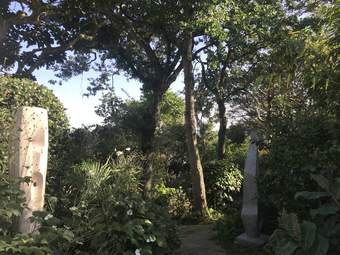
Barbara Hepworth Museum and Sculpture Garden, Photo: © Jodi Dickinson
Important to Hepworth's carefully curated garden are the mature trees, 6 of which she planted herself. Woodland gardens such as Hepworth’s create a sense of calm and security.
Benefits of planting trees:
- Create Habitat: Trees provide habitat for wildlife, including birds who will provide a soundtrack to your outdoor space
- Shade & Light: They provide shade and soft dappled light.
- Seasonal Variety: Trees provide seasonal highlights as they change throughout the year
- Climate Change: Plant trees for future generations, they capture carbon and help to fight climate change
Tips for planting trees:
- Size: Check the expected size of the tree and plant it somewhere it has enough room to grow
- Adaptation: Choose a tree adapted for warmer climes so it will be happy into a future of climate change
Working with your Garden
Recognising that its (Trewyn’s) beauty belongs to itself and not to me, I ought to regard it as a loan & never fail to recognise that what it has inspired me in it must be preserved by me and perpetuated
Barbara Hepworth
Tips for making your garden visually appealing:
- Maintain Clear Views: Have clear lines of sight within your garden. This helps with both light and simplicity, making it easier to enjoy
- Highlight Natural Beauty: Bring out the inherent beauty of your plants. This could be the colour of the bark or the way branches are shaped. Take inspiration from the Japanese concept, Wabi-sabi, and find beauty in imperfection and simplicity
Hepworth's garden is an inspiration for people of all ages and backgrounds. Her naturalistic approach involves planting in clearly defined layers of perennials, shrubs, and trees. If you take her garden as a model, it may help us develop a more caring relationship with the natural world.
About Jodi Dickinson
Jodi grew up in Cornwall and has 18 years experience working in horticulture. When he is not in the Barbara Hepworth Museum and Sculpture Garden, he looks after gardens around the coastline of Cornwall. Jodi is passionate about creating and developing beautiful and sustainable gardens that enhance well being and support wildlife. You can see more of his work on Jodi's website.

